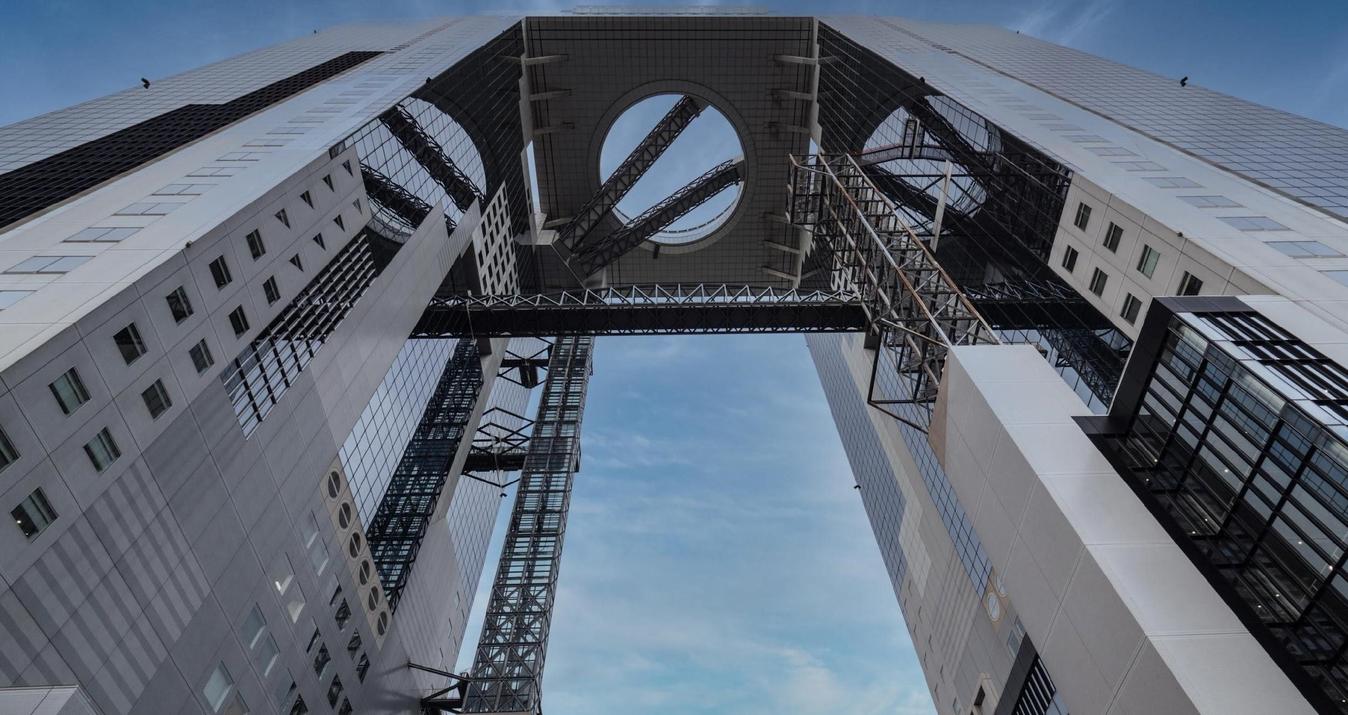What Are Megapixels And Their Impact On Photo Quality
August 04, 2023

Every photographer should know the camera MP meaning. If this term is new to you, let's figure it out together! Today in our blog, you will learn what MP is and how many megapixels are good for a camera.
If you've ever found yourself shopping for a camera or delving into the world of photography, the term "megapixel" is undoubtedly one you've encountered. It's a common buzzword used by camera manufacturers. But what does it mean when we refer to mp in cameras? Are megapixels of great importance? What is their role? How many megapixels should a camera possess?
While it may seem like a complex topic, unraveling the mystery of megapixels is rather straightforward. Once you grasp this concept, it can significantly enhance your photographic capabilities. In this article, we'll demystify what megapixels are, their influence on photos, and how to determine the ideal number of megapixels a camera should have. These are fundamental aspects that every aspiring photographer should understand. So, let's dive in!
What is a Megapixel?
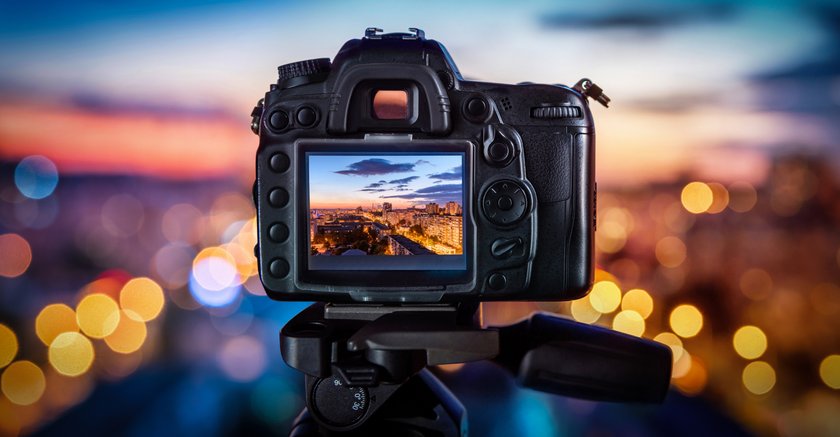
Megapixels, often shortened to MP, are tiny dots that come together to form an image, capturing specific details, shades, and colors. The more of them a camera has, the more details it can capture, leading to larger and clearer images.
When we say a camera has a certain number of MP, we’re talking about how many tiny dots (or pixels) it can capture in one picture. For example, a camera with 20 megapixels can capture about 20 million tiny dots in each image. These dots are like jigsaw puzzle pieces, all coming together to create the whole picture.
Pixels vs Megapixels
While pixels and megapixels are related, they’re not the same thing. Each one of the tiny dots in the picture is called a pixel, but now, let’s think big. How much is a megapixel?
When we have a million of these dots, that’s what we call a megapixel. The term “mega” just means a million. So, a MP is a fancy way of saying a million pixels. When people talk about pixels and megapixels, a pixel is one tiny dot in the picture, a megapixel is a million of these dots. The more dots the camera can capture, the more detail you can see in the image.
Total and Effective Pixels
Camera specs usually list two types of pixel counts: total pixels and effective pixels. Let's consider each type separately for a better understanding.
Total Pixels: The Whole Picture
The total number of pixels refers to all tiny light-detecting squares on the camera sensor. This includes not only those that contribute to creating the final image but also those that line edges of the sensor. The pixels lining the edges don’t usually contribute to the image you see, but they serve a key role in helping the camera to function better. They help cameras adjust various factors, such as color and lighting, which are important for getting a high-quality photo. For example, imagine having a huge bucket of Lego blocks. The total pixels are like all Lego blocks in a bucket.
Also read: Auto Enhance Photo: Elevate Your Photography with a Single Click
Effective Pixels: The Real Workers
Effective pixels, on the other hand, are the ones actually used to capture the image you see on your camera screen or the photo you print. They’re like the workers creating the final result, gathering light and information about the scene in front of the camera and converting it into the digital image you see.
In our Lego analogy, if the total pixels are all the Lego blocks in the bucket, the effective pixels are the ones actually used to build a Lego castle. They’re the ones doing the work that results in the final creation.
The Balance Between Total and Effective Pixels
The total and effective pixels must work harmoniously to produce high-quality images. The edge pixels (part of the total pixel count but not counted in the effective pixels) assist in improving the accuracy and quality of the image data that the effective pixels are collecting. They help the camera better understand the light and color around the edges of the frame, allowing the camera to create more accurate, pleasing images.
While the number of effective pixels is typically used to describe a camera's resolution, total and effective pixels play vital roles in capturing and creating photographs.
What Do Megapixels Do
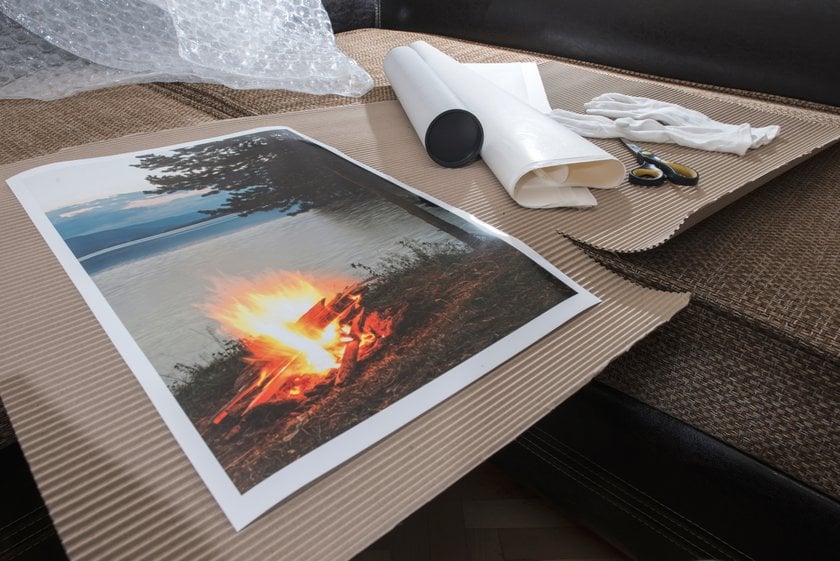
Megapixels vs Resolution? MP are more than just numbers — they’re the key to unlocking the full potential of the photos — their resolution and clarity. If you’re viewing images on a smaller screen, like a smartphone or tablet, you might not notice the difference that extra megapixels make. The photos can still look crisp and clear even if they’re not at the highest possible resolution.
However, the number of megapixels becomes very important if images are printed, especially in large formats. A higher number allows for the creation of larger prints without losing details or clarity. It’s like having the freedom to transform the photos into anything from a postcard to a poster while maintaining the same high quality.
More megapixels give more creative freedom in editing photos. You can crop and zoom into photos without worrying about them becoming pixelated or blurry. Changing the focus or composition after the picture was taken is possible, giving you more chances to create the perfect image.
Even if the camera doesn’t boast a high pixel count, don’t worry. Luminar Neo, an AI photo editor, will help with its pic sharpener tool. This advanced feature can enhance the clarity and details in images, making them look sharper and more vibrant. So, regardless of your camera’s pixel count, with Luminar Neo, you can always produce stunning, high-quality photos.
Advanced yet easy-to-use photo editor
Get Luminar Neo NowComparing Megapixels
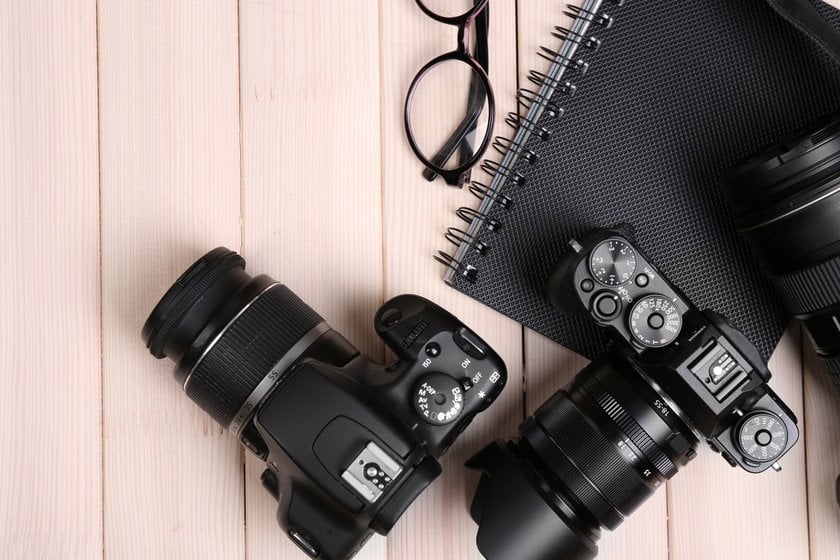
Here's a detailed megapixel comparison of different camera resolutions to help you understand how resolution affects image size, print size, and usability. The number of MP is obtained by multiplying the width by pixel height.
Megapixels (MP) | Image Resolution (pixels) | Print Size at 300 DPI (inches) | Suitable For |
1 MP | 1280 x 720 | 4.27 x 2.4 | Web images, small digital photos |
2 MP | 1600 x 1200 | 5.33 x 4 | Standard prints, small photo frames |
3 MP | 2048 x 1536 | 6.82 x 5.12 | Larger prints, web photos |
5 MP | 2560 x 1920 | 8.53 x 6.4 | Good for high-quality 8"x10" prints |
8 MP | 3264 x 2448 | 10.88 x 8.16 | Standard for larger photo prints, digital photography |
10 MP | 3648 x 2736 | 12.16 x 9.12 | Posters, detailed photo editing |
12 MP | 4000 x 3000 | 13.33 x 10 | High-quality large prints, magazine-quality photos |
16 MP | 4920 x 3264 | 16.4 x 10.88 | Professional-level large prints, commercial use |
24 MP | 6000 x 4000 | 20 x 13.33 | High-end photography, detailed cropping, billboards |
33 MP | 7680 x 4320 (8K) | 25.6 x 14.4 | 8K video, large format prints, extreme detail |
50 MP | 8688 x 5792 | 28.96 x 19.31 | Large commercial banners, extreme detail reproduction |
102 MP | 11648 x 8736 | 38.83 x 29.12 | Fine art prints, museum-quality large format photography |
Key Notes:
DPI (dots per inch) is commonly used for print resolution. 300 DPI is standard for high-quality printing.
With more megapixels, larger prints with sharper details are possible.
Smaller MPs are sufficient for internet and everyday use, while cameras with higher MPs are needed for professional photography and large-scale printing.
How many megapixels is a good camera? Is more megapixels better? When comparing them, it’s important to remember that a higher number does not necessarily mean a better camera or superior image quality. What are the average megapixels for a camera? Expect it to have from 12 to 20. The usefulness and impact of a camera’s megapixel count can vary depending on specific photography needs.
A camera with about 8 to 12 megapixels is often enough for sharing images online or viewing them on digital screens. This is because most devices, such as smartphones, tablets, or laptops, have screens with resolutions that range from around 1 to 4 million pixels (1-4 megapixels). This means they can't fully display all the details captured in ultra-high-resolution images.
A higher megapixel count becomes beneficial when the plan is to print photos, especially in large sizes, or extensively edit, crop, or enlarge them. For printing a photo at a typical high-quality resolution of 300 dots per inch (DPI), an 8-megapixel image can make an excellent 8x10-inch print. However, more megapixels are needed in case of printing in larger sizes while maintaining the same crisp detail. A 20-megapixel photo could be printed at 300 DPI as a larger 16x20-inch print.
How many megapixels do professional photographers use? They typically use cameras with 12 to 50 MP. However, the exact number can vary depending on the specific needs of their work. For example, landscape and fashion photographers opt for cameras with higher megapixel counts for enhanced details, while sports and wildlife photographers prioritize speed over resolution.
Also read: Landscape vs Portrait Orientation: What is the Difference?
ISO and Megapixels
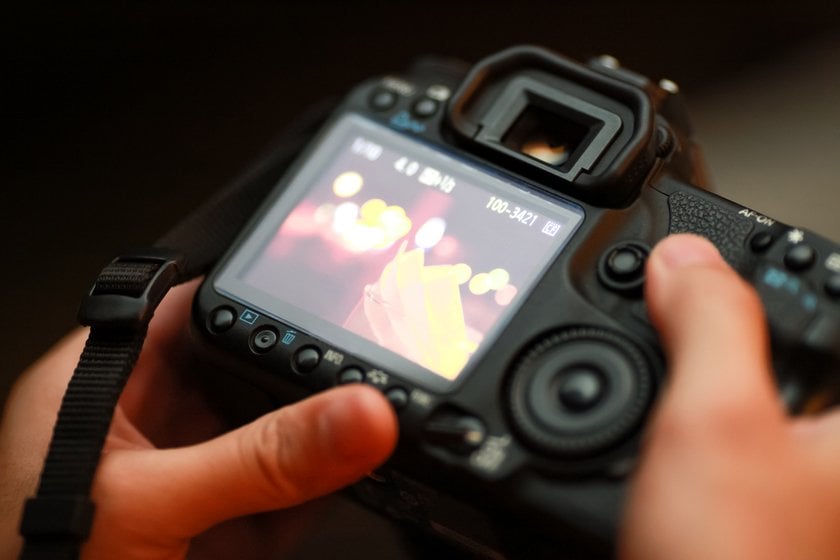
What is ISO in photography, and how is it related to megapixels? ISO is a camera setting that controls the sensitivity of a camera's sensor to light. While a higher megapixel count can give more detail in enough light, it might also result in more noise if a high ISO is used in low light. This is why many professional photographers prefer cameras with larger sensors and reasonable megapixel counts, as they provide a balance of resolution and low-light performance.
How do Megapixels Affect Picture Quality
Megapixels are indeed an important part of the picture in photography. A camera with more MP can capture larger, detailed images. However, more megapixels don’t always guarantee better image quality, as other elements are at play.
One such element is the size of the camera's sensor. Larger sensors can gather more light, which improves performance in low light conditions and provides a broader range of colors and shades in photos. Therefore, if two cameras have the same number of MP, the one with a larger sensor can often produce better-quality images.
Also read: Best Photo Editing Software for Beginners — Free, Trial, and Paid
The lens quality also plays a significant role. A lens of higher quality can direct light onto a sensor more precisely, resulting in sharper images and reduced distortion. Even if a camera has many megapixels, it won’t produce sharp images if lens quality is subpar.
Lastly, the way a camera processes images is crucial. The hardware and software a camera uses to process data it captures can greatly impact the final image. Effective image processing can diminish noise, improve colors, and increase sharpness, among other benefits.
While a higher megapixel count can capture more detail, it’s not the only factor determining image quality. The size of the camera's sensor, quality of its lens, and how it processes images are equally important to the final result.
Figuring Out Picture Size in Pixels
A bit of math is needed to determine the image size in pixels, but don’t worry; it’s pretty straightforward. This size is calculated by multiplying the number of horizontal pixels (width) by the number of vertical pixels (height).
Let’s take an example: say you have a 12MP camera. But how does that translate into pixels? In many cases, a 12-megapixel camera, which often follows a common aspect ratio of 3:2, would output approximately 4288 pixels wide by 2848 pixels tall. Where do these numbers come from? When multiplied, they’re the largest whole numbers that come as close as possible to 12 million without going over while also sticking as close as possible to that 3:2 ratio.
These pixel dimensions can help to understand how large images are displayed or printed without losing quality. If you want to print a photo at a high-quality standard of 300 pixels per inch (PPI), 4288 by 2848 pixels are printed at roughly 14.3 by 9.5 inches.
Understanding the connection between a camera’s megapixels and the resulting image size in pixels can help you determine the best camera for your needs, especially if you plan to print photos or display them on large screens.
How Megapixels Affect Cropping
Megapixels play a significant role in cropping. More megapixels in an image mean more detail, which can give more freedom to crop photos without losing quality (when pictures become blurry or grainy).
Cropping a picture taken with a 24MP camera gives a lot of pixels to work with. So it is possible to cut away substantial parts of a photo and still have millions of pixels left, ensuring the cropped image retains a high level of detail and clarity.
On the other hand, a photo taken with a 12MP camera starts with fewer pixels. This means those valuable pixels are quickly lost when the image is cropped. As a result, the cut portion may begin to look blurry or pixelated sooner than it would with a higher megapixel count.
How Megapixels Affect Printing
These tables compare the megapixels required to achieve specific maximum print sizes at two different DPI (dots per inch) resolutions: 150 DPI and 300 DPI.
150 DPI
Megapixels | Max Print Size (inches) |
4.9 | 12" x 18" |
9.7 | 18" x 24" |
19.4 | 24" x 36" |
30.4 | 30" x 45" |
54.0 | 40" x 60" |
Lower resolution is ideal for large prints, such as posters and banners, that can be viewed from a distance. A 4.9 MP image are printed at 12 x 18 inches, while a 40 x 60-inch size requires 54 MP.
300 DPI
Megapixels | Max Print Size (inches) |
19.4 | 12" x 18" |
38.8 | 18" x 24" |
77.6 | 24" x 36" |
121.5 | 30" x 45" |
216.0 | 40" x 60" |
Higher resolution for close-up viewing is often used for professional-quality printing. A 19.4 MP image is required for a 12 x 18-inch print and 216 MP for a 40 x 60-inch print.
The higher the DPI, the more megapixels are required for the same print size to maintain image clarity.
Conclusion
Understanding the role of megapixels is crucial in photography. After all, as you've gleaned from this article, an increased MP count enables to:
produce more detailed, larger images,
have greater creative flexibility during editing and cropping,
provide higher print quality, especially for large formats.
So, how many megapixels is good for a camera? It depends. Other things also matter. Sensor size, lens quality, and the camera's image processing capabilities significantly influence the quality of the photos. So remember to give these aspects their due attention.
While more megapixels can be beneficial, especially for professional photographers and those who print or display their images in large formats, it doesn't automatically equate to better image quality. Determining the right number of megapixels for the needs involves considering specific photography goals. Whether sharing pictures on social media or printing large-scale images for exhibitions, it's about finding the right balance that caters to your photographic aspirations.
Indeed, the most critical factor here is practice. The more you shoot, the more you'll master new techniques and improve your results. So, seize your camera and indulge in the joy of shooting.
FAQ
How many megapixels do I need?
Depending on your usage. Since 8-12 MP is enough for social networks or small print, and 20-50+ MP is ideal for large prints or professional work. Therefore, choose the value according to your needs.
Is 20 megapixels good?
This value is great for high-quality photos or prints up to 18 x 24 inches at 300 DPI.
How many pixels in a megapixel?
One megapixel is equal to 1 million pixels (1,000,000 pixels).
Does higher megapixels mean better quality?
Not necessarily. A higher MP improves resolution, but lens quality, sensor size, and lighting also affect image quality.
How many megapixels is a good camera?
A good camera typically has between 12 and 24 megapixels for general photography, which is sufficient for high-quality images, printing, and digital use.
Do higher megapixels mean better quality?
Not necessarily. Higher megapixels allow for more detail, especially when printing large images, but overall image quality also depends on factors like sensor size, lens quality, and processing.
How many megapixels is high resolution?
A high-resolution camera generally starts at 24 megapixels or more, providing enough detail for large-format printing and detailed cropping.
What MP camera does the newest iPhone have?
The newest iPhone (iPhone 15 Pro) features a 48-megapixel main camera for capturing high-resolution photos and videos.
How do megapixels affect image quality when printing?
More megapixels allow for larger prints without losing image quality. Higher megapixel counts produce sharper, more detailed prints, especially in larger sizes. However, for most standard prints, 12-24 MP is more than sufficient.



